Sagging of the upper or lower eyelid/wrinkle removal
Generated by the sagging of skin, muscle, or fat around the eyelid (prolapse). Treatment of not only the skin but also the muscle and fat is necessary.
For the upper eyelid
Sagging of the upper eyelid is caused by the muscle around the eye sagging over time due to gravity, which stretches the skin. In this procedure, the skin along the eyebrows is incised, the excess skin of the upper eyelid is ablated, and the area is sutured together, smoothing the area around the eye. If there is excess fat, then the excess fat is also ablated as necessary at the same time. If the levator function—the raising of the eyelid controlled by the eyelid levator muscle—is significantly diminished, then eyelid ptosis surgery will also be conducted.
For the lower eyelid
The cause of sagging in the lower eyelid is relaxation of the muscles around the eye due to gravity and the forward protrusion of fat. In this procedure, the skin below the lower eyelashes is incised, the excess skin is ablated and the excess fat removed, and sutures are put in place. Based on symptoms, if appropriate, only the excess skin may be ablated. If there is a great deal of excess fat, then a procedure will also be conducted to remove fat from the conjunctival side.
For the upper eyelid
Sagging of the upper eyelid is caused by the muscle around the eye sagging over time due to gravity, which stretches the skin. In this procedure, the skin along the eyebrows is incised, the excess skin of the upper eyelid is ablated, and the area is sutured together, smoothing the area around the eye. If there is excess fat, then the excess fat is also ablated as necessary at the same time. If the levator function—the raising of the eyelid controlled by the eyelid levator muscle—is significantly diminished, then eyelid ptosis surgery will also be conducted.
For the lower eyelid
The cause of sagging in the lower eyelid is relaxation of the muscles around the eye due to gravity and the forward protrusion of fat. In this procedure, the skin below the lower eyelashes is incised, the excess skin is ablated and the excess fat removed, and sutures are put in place. Based on symptoms, if appropriate, only the excess skin may be ablated. If there is a great deal of excess fat, then a procedure will also be conducted to remove fat from the conjunctival side.
| Duration of Surgery | 1-2 hours |
|---|---|
| Period of swelling following surgery | ~1 week |
| Recovery period | ~1 week |
| Hospital visits following surgery | Removal of sutures 1 week after surgery |
| Cost | ¥367,500 |
Lower eyelid sagging/wrinkle removal - Surgery details

1: The skin and muscle of the eyelid sag due to the effects of age, etc.
2: Incision marks are made: along the eyebrow for the upper eyelid, beneath the lower eyelashes for the lower eyelid
3: The excess orbital fat and skin are ablated
4: Sutures are put in proper place; treatment is finished.

Bags underneath the eyes (baggy eyelids/nasolabial folds)
In most cases, "bags" beneath the eyes thought at first glance to be pigmentation are really caused by the prolapse of fat and the shadows cast by the resultant puffiness and the indentations underneath. These indentations can cause the condition known as "nasolabial folds" along the cheeks. This treatment removes the protruding excess fat and injects fat into the indented area to achieve results. If the skin is sagging, it is best to conduct wrinkle removal along the lower eyelid at the same time. Other treatment for this condition aside from this procedure include injections of PRFM, b-FGF growth factor, or collagen and hyaluronic acid.
| Duration of Surgery | 60-90 minutes |
|---|---|
| Period of swelling following surgery | 3-4 days |
| Recovery period | 4-5 days |
| Hospital visits following surgery | 1-2 weeks after surgery |
| Cost | ¥360,000 Additional cost in case fat injection is needed |
Bags underneath the eyes - Surgery procedures

1: Prolapse of fat and shadows under the eyes can be seen
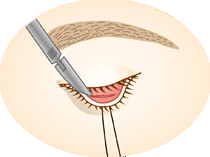
2: The eyelid is turned inside out and 1cm incisions are made on the conjunctival side
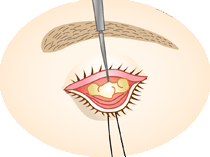
3: Fat can be seen at the incised part that was divided into 3 sections
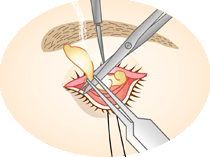
4: Ablation of the fat according to the design that was decided during the counseling preceding the surgery
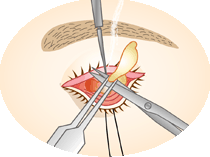
5: Bleeding is stopped with care in case of fat ablation
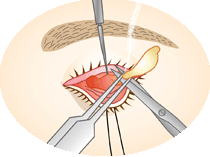
6: After the desired fat has been ablated, the incision is sutured; finished
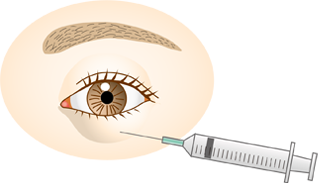
7: Depending on the symptoms, fat can be injected on lines













